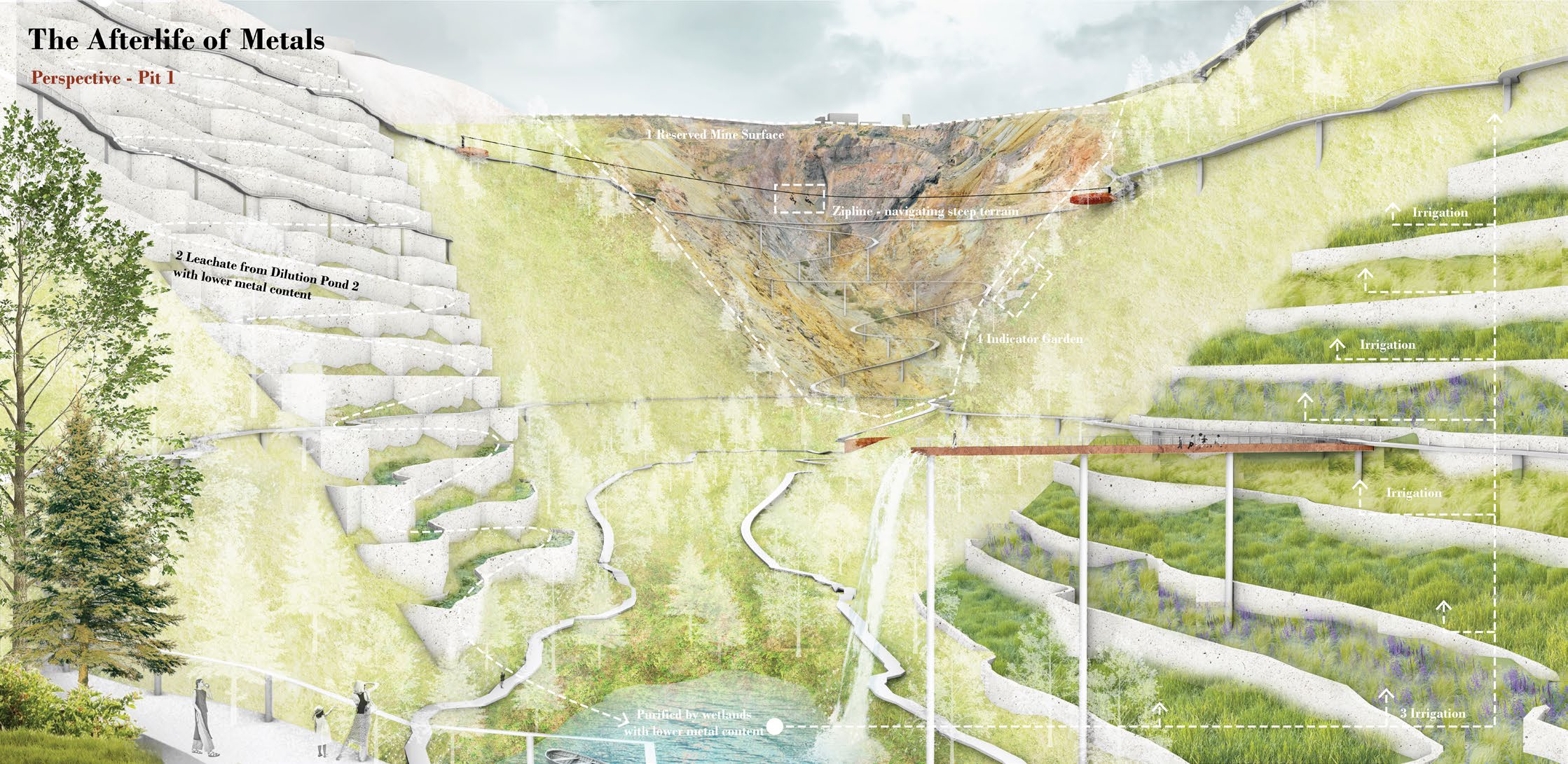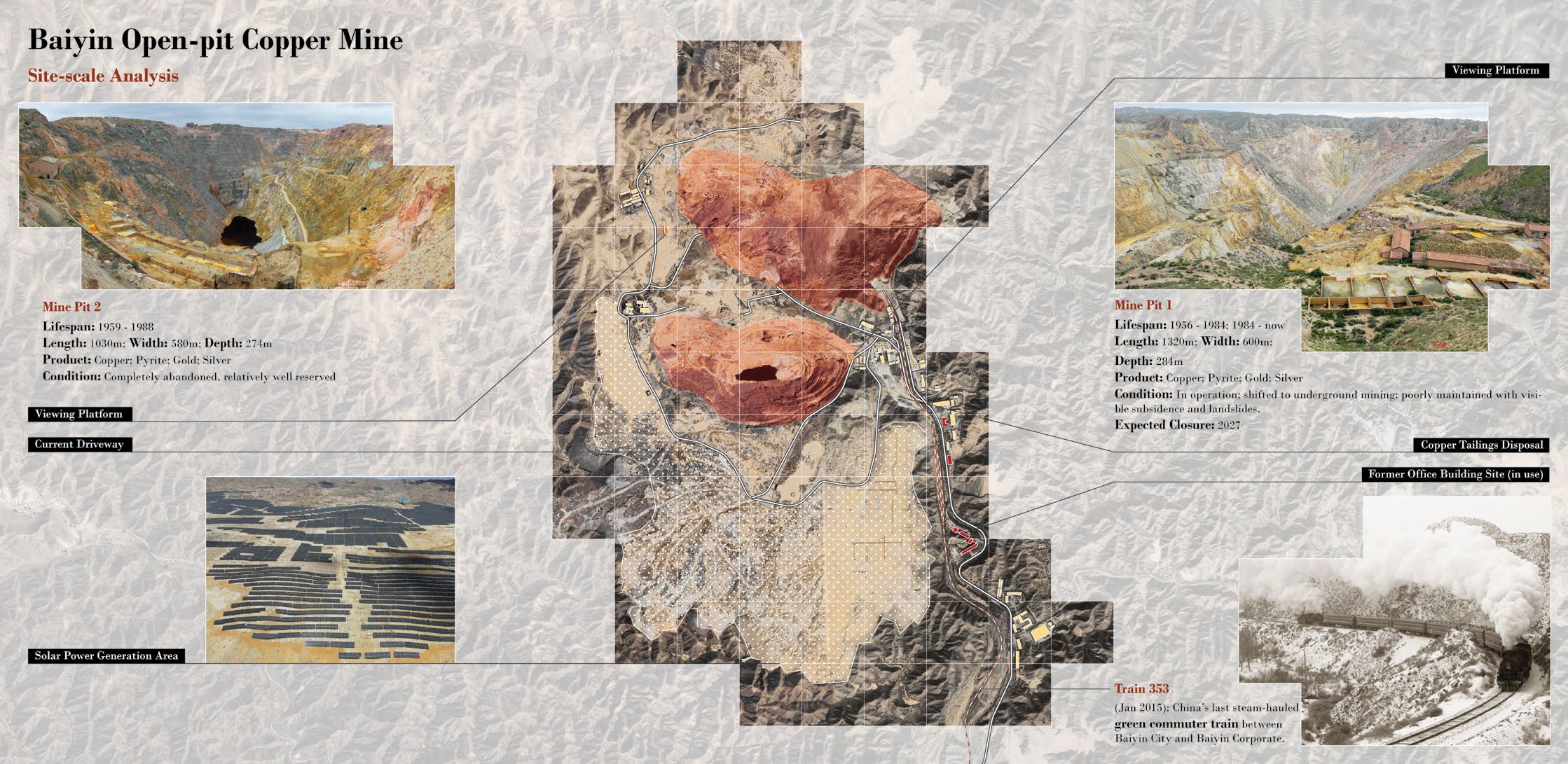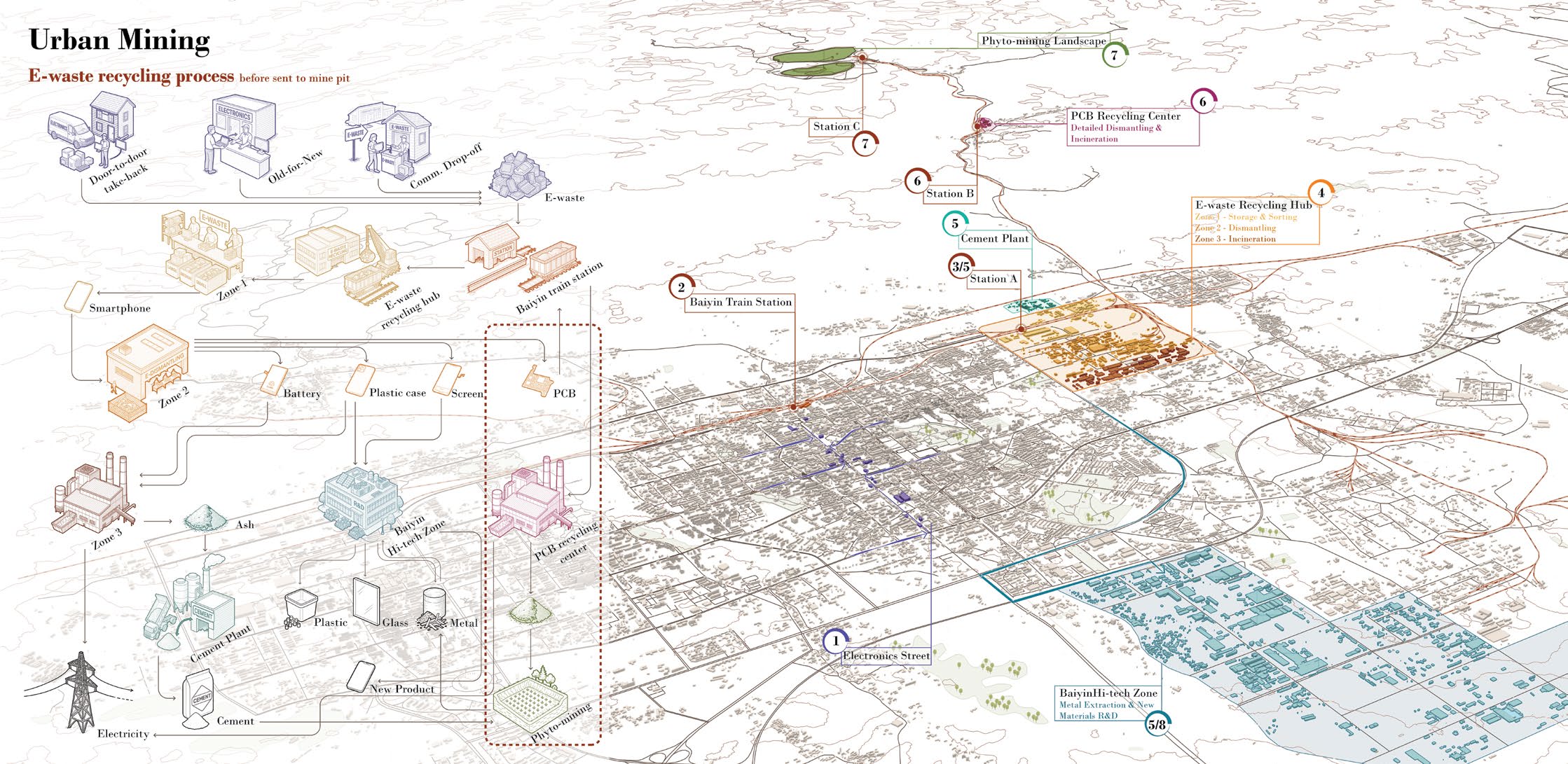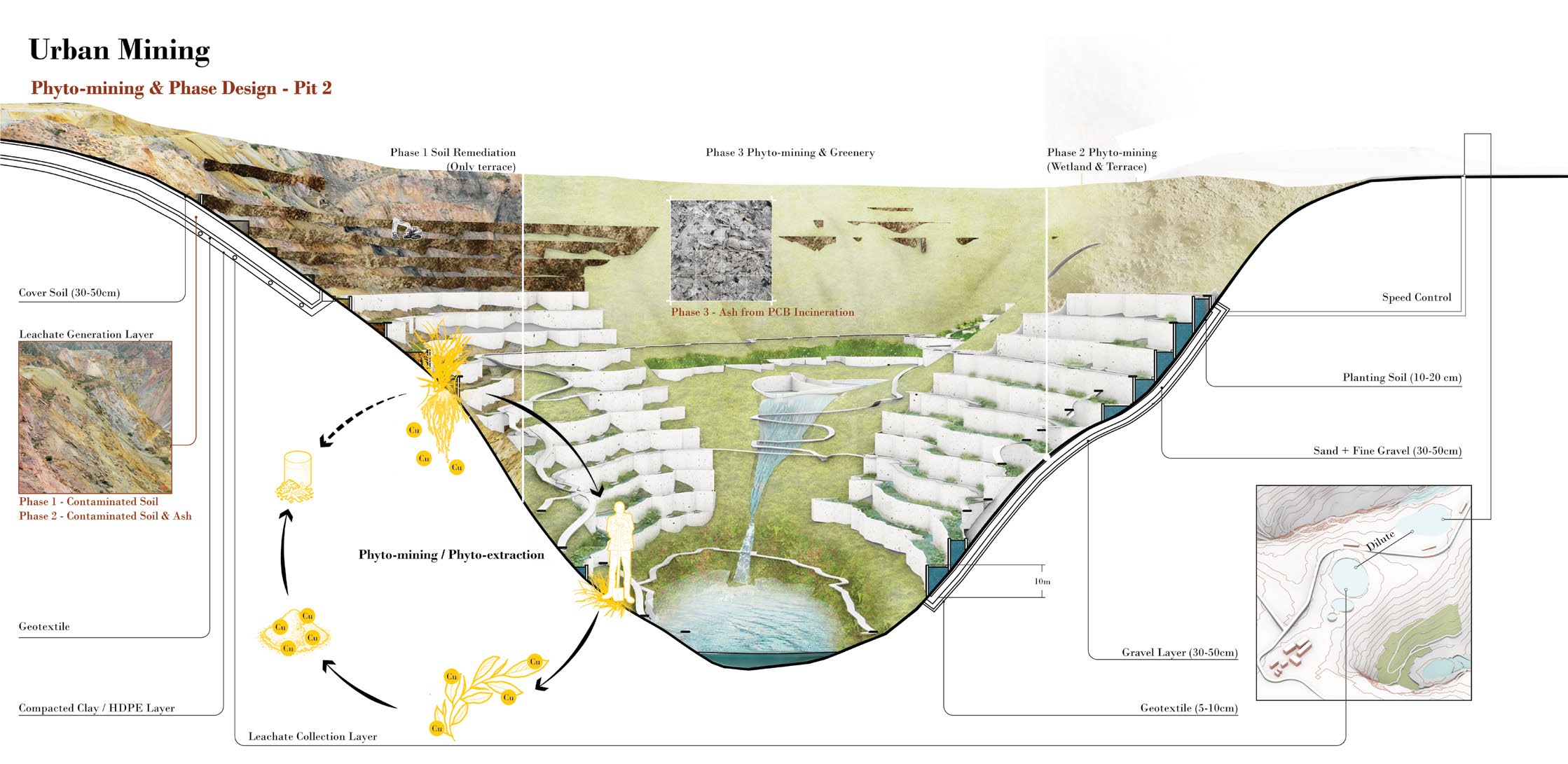The Afterlife of Metals: Reimagining E-Waste as Landscape Potential

As technology advances and consumerist lifestyles spread globally, electronic waste has become one of the fastest-growing solid waste streams. The informal recycling of e-waste, along with rapid energy transitions and technological innovation, creates a false perception of metal scarcity, intensifying demand for traditional mining. Yet both systems cause similar problems—heavy metal pollution and environmental injustice.
This dissertation proposes a regenerative, circular alternative to the linear “take–make–dispose” model, grounded in cradle-to cradle design thinking. It envisions e-waste as a viable alternative to virgin metal ores and advocates for urban mining—specifically phyto-mining—as a sustainable method to recover metals while remediating the land.
The Baiyin Open-pit Copper Mine, a site nearing depletion, serves as the design site, where a post-mining landscape is reimagined as a healing, productive, and future-oriented environment, integrating ecological restoration with resource recovery to demonstrate the potential of landscape architecture in advancing sustainable extraction practices.

At the site scale, there are two main mining pits and a solar panel field located in the southern part of the site. Pit 2 is completely abandoned and retains more of the original mining landscape. Pit 1 remains in partial operation for underground mining, but is scheduled to close by 2027.

E-waste is collected citywide and sent by train to the recycling hub for sorting and dismantling. Non-recyclables are incinerated; ash is reused in cement. Recyclables go to the Hi-tech Zone. PCBs are further processed offsite, and the resulting ash is sent to a phyto-mining site for metal recovery.

Contaminated soil is excavated for leachate collection, while terraces are formed for planting hyperaccumulators. Over time, metal-rich ash replaces terrace soil, and wetlands expand for efficient phyto-mining. Collected leachate is diluted and fed into wetlands. Harvested plants are incinerated, and their ash used for metal extraction.

This perspective of Pit 1 showcases the preserved mining landscape, constructed wetlands, terraces, and a plant indicator garden. A zipline is introduced as a playful shortcut across the pit, addressing the significant height difference while enhancing the site’s recreational appeal.